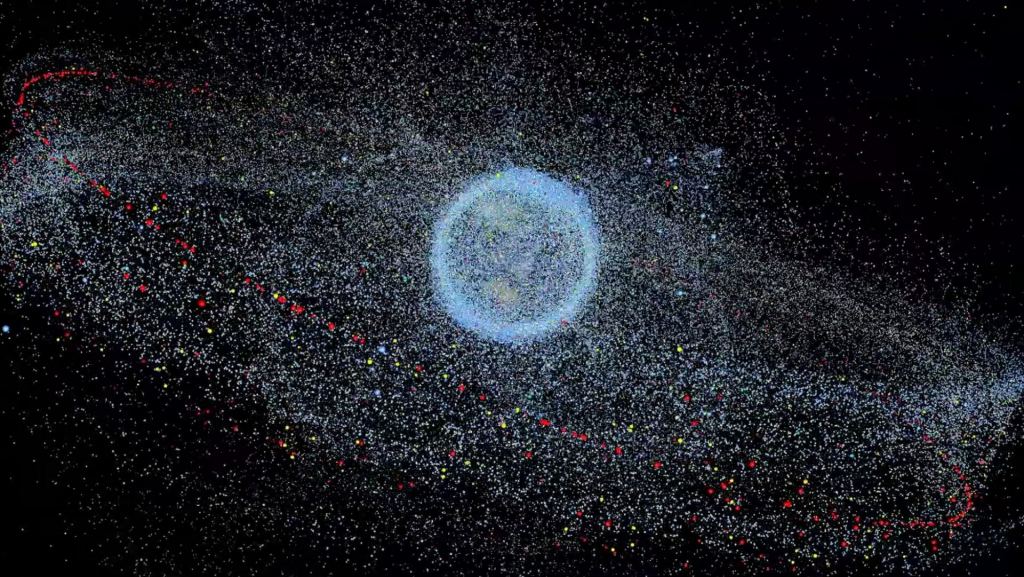Space debris is a major problem for space exploration. There are millions of pieces up there in orbit from flecks of paint to defunct satellites. It is a known challenge to space exploration creating a shell of uncontrolled debris which could cause damage to orbiting craft or astronauts. A team at Astroscale have a spacecraft in orbit whose singular purpose has been to rendezvous with a defunct Japanese upper-stage rocket module. On arrival it is to survey the debris to test approach and survey techniques to ultimately inform how we can remove them from orbit.
Space debris, or space junk, is exactly what it says; pieces of human made objects orbiting Earth that are no longer required. It's not just unwanted items though, many pieces are the result of collisions and at speeds in excess of 28,000 kilometres per hour they pose a real threat to astronauts and operational spacecraft in low earth orbit.
Taking a bleak view, NASA scientists Donald Kessler proposed a scenario where the shear volume of debris is high enough that collisions could cascade into a chain reaction. The chain reaction of collisions could ultimately lead to an exponential growth in debris and even cut off our access to space. It may seem a pessimistic view but some computer modelling of the scenario does give strong indications that this may be the case if we don't act now.
There have been numerous, almost fanciful ideas proposed from great big balloons covered in sticky stuff like giant fly paper in orbit to pickup bits and bobs floating around. Nets have also been proposed even lasers to piece by piece destroy the offending objects. If I were a betting man I would go for something along the lines of a net travelling through space at similar velocity, scooping up the debris and controlling its gentle deorbit until either landed safely for collection or burnt up in the atmosphere.
The ideas are there, what we are lacking, is data to assess their feasibility. Enter Astroscale, a company that was founded in 2013 and develops in-orbit solutions. They have been selected by the Japan Aerospace Exploration Agency - JAXA - for the first phase of Commercial Removal of Debris Demonstration. The purpose to demonstrate how the technology for removing large pieces of debris. This has led to the development of ADRAS-J (Active Debris Removal by Astroscale-Japan.)
ADRAS-J was launched on 18 February and started its rendezvous phase four days later. On 9 April it began its approach from a few hundred kilometres and from 16 April it began its automated relative navigation approach taking it to within a few hundred metres using the onboard infrared camera. On 23 May it approached to 50 metres, a first for any spacecraft to arrive in such proximity to a large piece of debris.
The item is the upper stage of a Japanese rocket that measures 11 metres long and 4 metres in diameter. Now the two are so close, ADRAS-J will demonstrate proximity operations and collect images of the rocket to assess its movements. This is a particularly interesting object for ADRAS-J to study becausey it has no technology or infrastructure to enable docking or servicing so is a challenging piece of debris to remove.
Source : Historic Approach to Space Debris: Astroscale’s ADRAS-J Closes in by 50 Meters
 Universe Today
Universe Today

